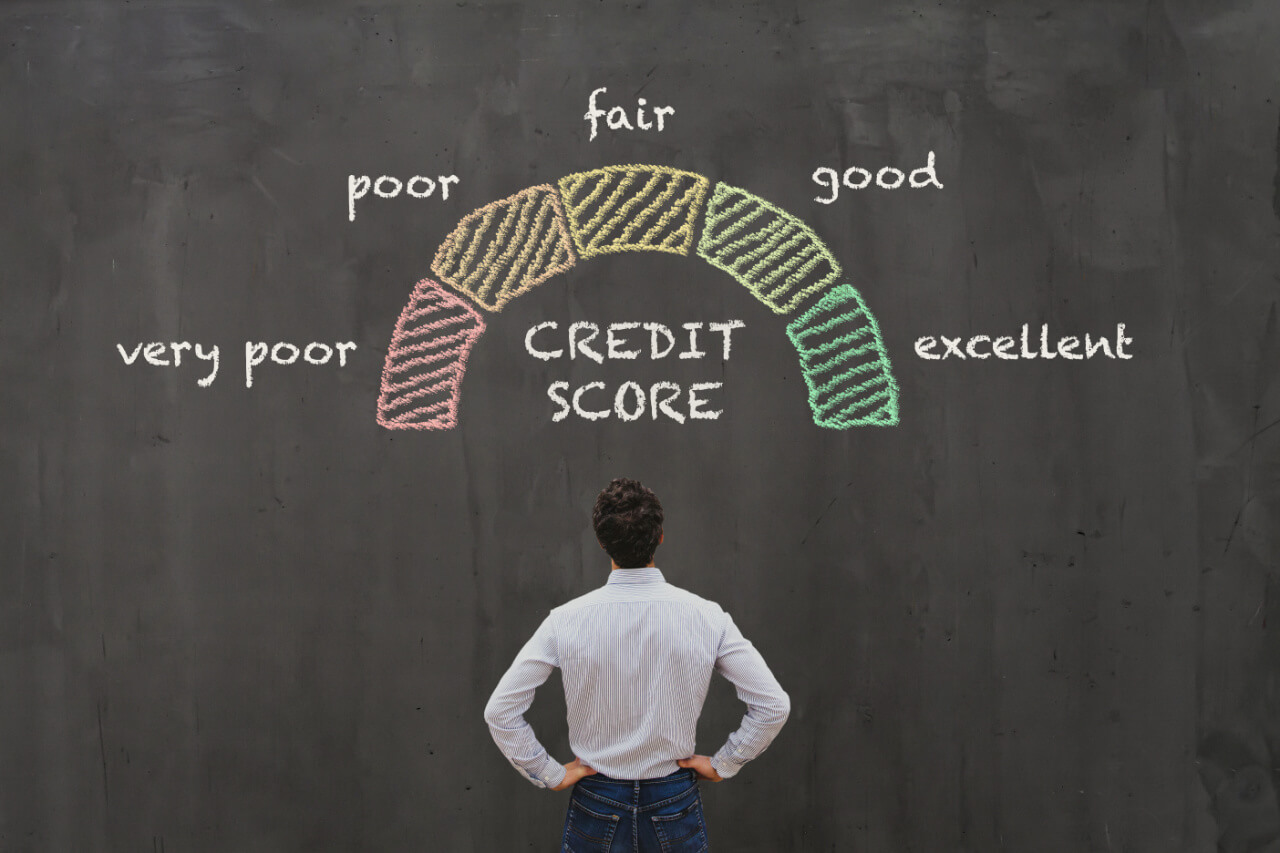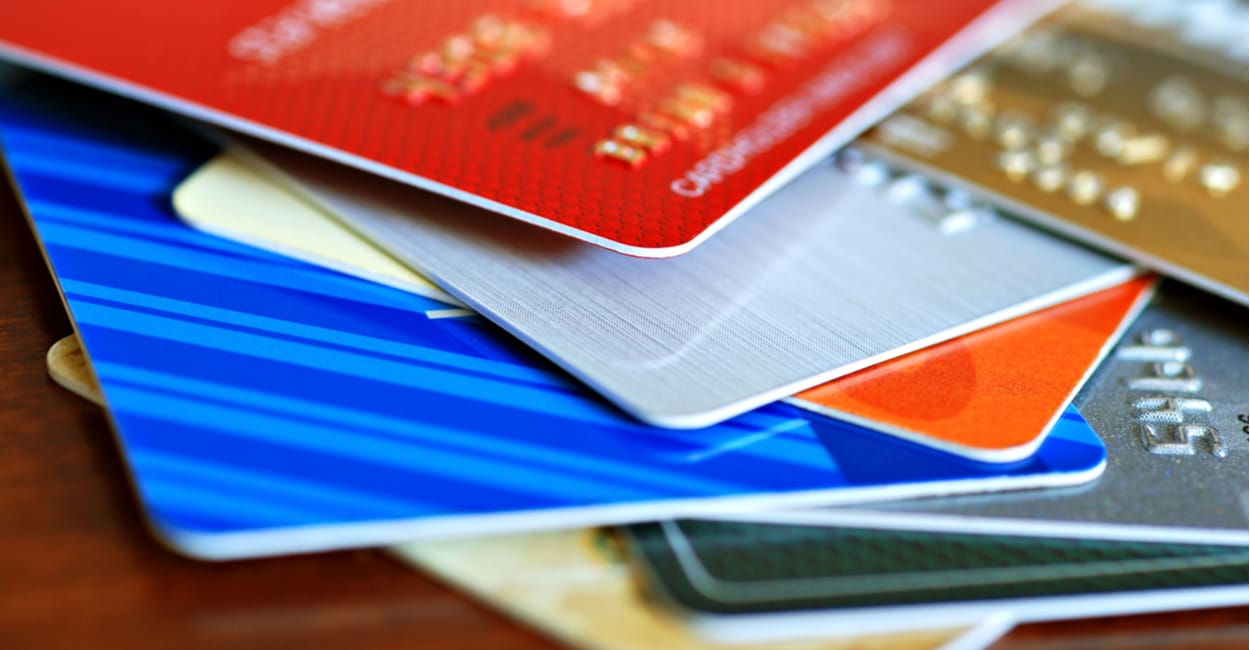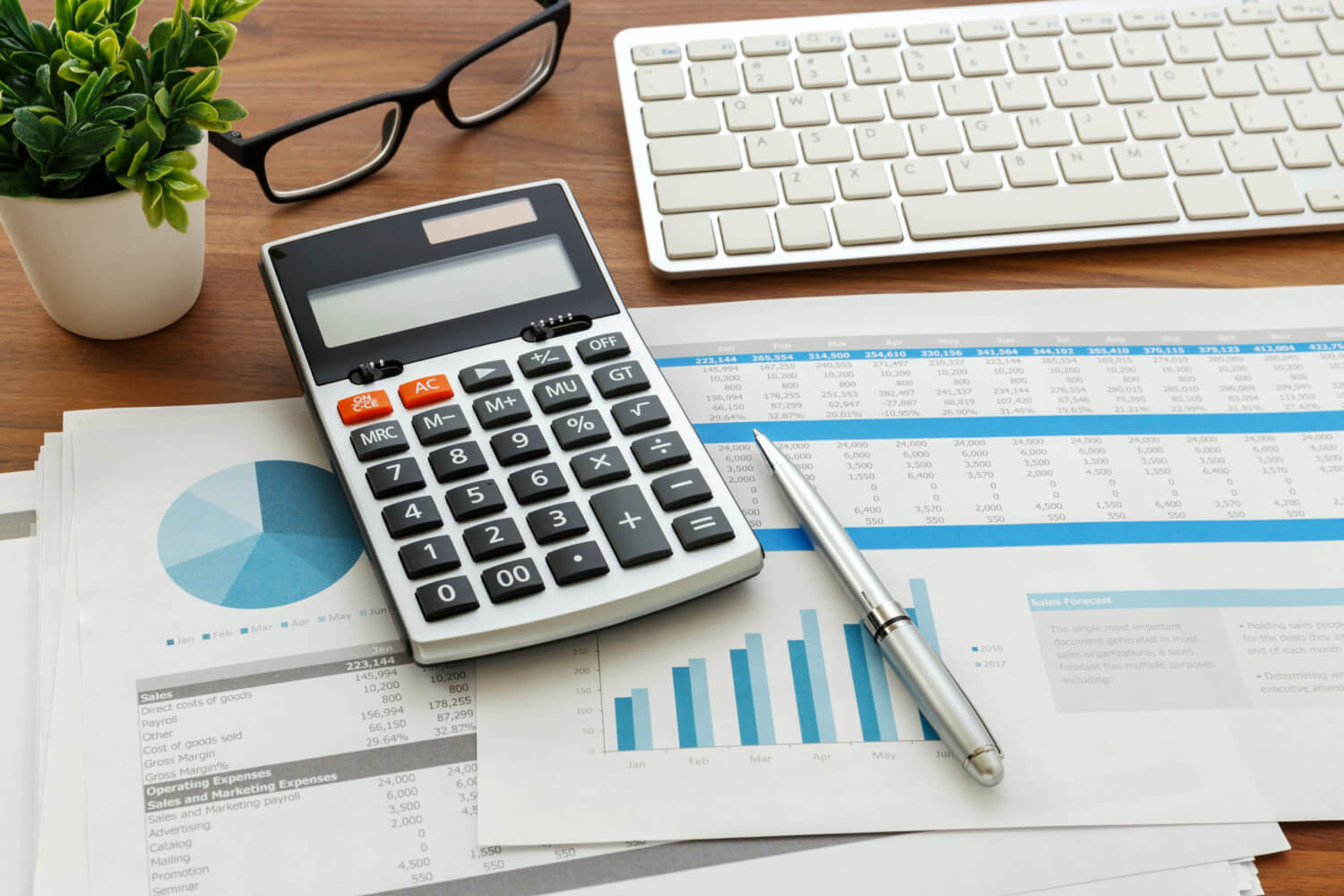Home>Finance>How Long After Bankruptcy Can You Get A Credit Card


Finance
How Long After Bankruptcy Can You Get A Credit Card
Published: October 25, 2023
Find out how long it takes to get a credit card after bankruptcy. Improve your finance and rebuild your credit with expert tips and advice.
(Many of the links in this article redirect to a specific reviewed product. Your purchase of these products through affiliate links helps to generate commission for LiveWell, at no extra cost. Learn more)
Table of Contents
- Introduction
- Understanding Bankruptcy
- Impact on Credit Score
- Rebuilding Credit After Bankruptcy
- Factors Affecting Credit Card Eligibility
- Secured Credit Cards
- Unsecured Credit Cards
- Alternative Options to Rebuild Credit
- Timeframe to Qualify for a Credit Card After Bankruptcy
- Steps to Take Before Applying for a Credit Card After Bankruptcy
- Conclusion
Introduction
Bankruptcy is a financial situation that can leave individuals feeling overwhelmed and uncertain about their future. It is a legal process in which a person or business declares that they are unable to repay their debts. While bankruptcy might seem like a daunting and negative event, it can provide individuals with an opportunity to start afresh and rebuild their financial life.
One of the common concerns that people have after filing for bankruptcy is how it will affect their ability to obtain credit in the future, particularly in the form of credit cards. Having a credit card can be essential for daily purchases and managing financial emergencies. However, after bankruptcy, lenders may be hesitant to extend credit due to the associated risk.
In this article, we will explore how bankruptcy impacts credit scores, the steps to rebuild credit after bankruptcy, the factors affecting credit card eligibility, and the timeframe within which you may qualify for a credit card after bankruptcy. Whether you are considering bankruptcy or have already filed, understanding the process and its implications can help you make informed decisions to improve your financial standing.
Understanding Bankruptcy
Bankruptcy is a legal process that provides individuals and businesses with a fresh start by relieving them of overwhelming debt. There are several types of bankruptcy, but the most common forms for individuals are Chapter 7 and Chapter 13 bankruptcy.
Chapter 7 bankruptcy, also known as liquidation bankruptcy, involves the sale of non-exempt assets to repay creditors. Once the process is complete, most remaining debts are discharged, providing a clean slate for the filer. Chapter 13 bankruptcy, on the other hand, allows individuals to create a repayment plan to pay off their debts over a period of three to five years.
Bankruptcy stays on your credit report for a specified period, typically seven to ten years, depending on the type of bankruptcy filed. During this time, lenders and creditors will see the bankruptcy notation, which can affect your ability to obtain credit.
It’s essential to understand that bankruptcy should be considered as a last resort, after exploring all other options. Consulting with a financial adviser or credit counselor can help individuals gain a clear understanding of their financial situation and explore alternatives to bankruptcy.
While bankruptcy provides relief from debt burdens, it is crucial to recognize the impact it can have on the individual’s credit score and financial standing. Rebuilding credit after bankruptcy is a necessary step to regain financial stability and regain access to credit products such as credit cards.
Impact on Credit Score
Filing for bankruptcy can have a significant impact on your credit score. The exact impact will depend on various factors, including the type of bankruptcy filed and your credit history prior to filing.
Typically, bankruptcy will result in a significant drop in your credit score. For individuals with an already low credit score, the impact may be less severe compared to those with a higher score. It’s important to note that the higher your credit score before bankruptcy, the more substantial the drop is likely to be.
The negative impact of bankruptcy on your credit score can make it challenging to obtain credit in the future. Lenders view individuals who have gone through bankruptcy as high-risk borrowers since they have a history of not being able to manage debt effectively.
It’s important to remember that while bankruptcy remains on your credit report for a period of time, its impact on your credit score gradually lessens over time. By practicing responsible financial habits and taking steps to rebuild your credit, you can improve your score and demonstrate to lenders your ability to manage credit more effectively.
Rebuilding your credit score after bankruptcy will require time, patience, and a consistent effort to establish positive credit history. Taking steps to rebuild credit is essential to regain financial stability and regain access to credit products such as credit cards.
Rebuilding Credit After Bankruptcy
Rebuilding your credit after bankruptcy is crucial to regaining your financial stability and improving your creditworthiness. While it may take time and effort, there are steps you can take to gradually rebuild your credit score. Here are some strategies to consider:
- Create a budget and stick to it: Developing a budget can help you manage your finances effectively and ensure that you can make timely payments towards your debts.
- Pay all bills on time: Making timely payments is crucial in rebuilding your credit. Pay your bills, including any remaining bankruptcy-related debts, on time to demonstrate responsible financial behavior.
- Focus on secured debts: Secured debts, such as a car loan or a mortgage, can help rebuild credit faster compared to unsecured debts. Make regular payments towards these debts to show that you are a responsible borrower.
- Consider a secured credit card: A secured credit card requires a cash deposit that serves as collateral. Using a secured credit card responsibly and making timely payments can help rebuild your credit over time.
- Monitor your credit report: Regularly reviewing your credit report allows you to keep track of your progress and identify any errors or discrepancies that may be impacting your credit score. If you notice any inaccuracies, report them to the credit bureaus.
- Seek professional advice: Consulting with a financial advisor or credit counselor can provide you with valuable guidance and strategies to rebuild your credit effectively.
It’s important to remember that rebuilding your credit after bankruptcy is a gradual process. It may take some time to see significant improvements in your credit score. However, by consistently practicing responsible financial habits and implementing these strategies, you can rebuild your credit over time.
Factors Affecting Credit Card Eligibility
After filing for bankruptcy, several factors come into play when determining your eligibility for a credit card. Lenders will assess these factors to evaluate the level of risk associated with extending credit to you. Here are some key factors that can impact your credit card eligibility:
- Bankruptcy type and discharge date: The type of bankruptcy you filed (Chapter 7 or Chapter 13) and the date of discharge can influence your credit card eligibility. Typically, lenders are more cautious of extending credit immediately after bankruptcy. As time passes, your eligibility may improve.
- Credit score: Your credit score is a significant factor that lenders consider when determining credit card eligibility. After bankruptcy, your credit score may be low. The lower the credit score, the more difficult it may be to qualify for traditional credit cards.
- Income and employment stability: Lenders want to ensure that you have sufficient income to repay any credit card debt. Having a stable income and employment history can positively influence your credit card eligibility.
- Debt-to-income ratio: Lenders also consider your debt-to-income ratio, which is the percentage of your income that goes towards debt repayments. A lower debt-to-income ratio indicates a better ability to manage additional credit.
- Existing credit history: Your past credit history, aside from bankruptcy, is also taken into consideration. Lenders will examine your payment history and how you’ve managed debts in the past to assess your creditworthiness.
- Recent credit applications: If you have recently applied for multiple credit cards or loans, lenders may view this as a sign of increased risk and could be hesitant to approve your application.
It’s important to note that certain lenders specialize in providing credit cards to individuals with less-than-perfect credit. These may include secured credit cards or credit cards with higher interest rates or annual fees. Exploring these options can be a good starting point to rebuild credit after bankruptcy.
Remember, every lender has specific eligibility criteria, and it’s crucial to research and compare credit card offers to find ones that are suitable for your needs. By improving your creditworthiness over time and reaffirming responsible financial habits, you can increase your chances of qualifying for better credit card options.
Secured Credit Cards
Secured credit cards are a popular option for individuals looking to rebuild their credit after bankruptcy. These cards require a cash deposit as collateral, which serves as a security measure for the lender. The deposit is typically equal to the credit limit of the card.
Secured credit cards function similarly to traditional credit cards. You can use them to make purchases and build a positive payment history. It’s important to note that the cash deposit is not used to make payments towards the balance on the card. Instead, it serves as protection for the lender in case of non-payment.
The primary advantage of a secured credit card is that it allows you to demonstrate responsible credit usage and payment behavior. By making your payments on time and keeping your credit utilization low, you can gradually improve your credit score over time.
It’s important to choose a secured credit card from a reputable issuer that reports to the major credit bureaus. This ensures that your responsible credit behavior is reflected on your credit report and contributes to improving your credit score. Checking the fine print is crucial, as some secured credit cards may have high interest rates or annual fees.
It’s worth mentioning that while secured credit cards can be beneficial for rebuilding credit, they are not meant to be a long-term solution. Once you have established a positive credit history and improved your creditworthiness, you may consider transitioning to an unsecured credit card with better terms and conditions.
Remember, responsible credit card usage is key when rebuilding credit. Make your payments on time, keep your credit utilization low, and avoid maxing out your card. With consistent efforts over time, you can improve your credit score and open the door to more favorable credit options.
Unsecured Credit Cards
Unsecured credit cards are traditional credit cards that do not require collateral or a security deposit. These cards are typically offered to individuals with good to excellent credit scores. However, after bankruptcy, obtaining an unsecured credit card can be challenging due to the negative impact on your credit history.
While qualifying for an unsecured credit card immediately after bankruptcy may be difficult, it is not impossible. Some lenders specialize in providing credit cards to individuals who are in the process of rebuilding their credit. These cards may have lower credit limits and higher interest rates compared to traditional unsecured cards.
When considering unsecured credit cards after bankruptcy, it is crucial to research and compare different options. Look for cards with favorable terms, lower fees, and potential rewards programs. Additionally, make sure that the card issuer reports to the major credit bureaus, as this will help in building your credit history.
Once you have obtained an unsecured credit card, responsible usage is essential. Make consistent, on-time payments and keep your credit utilization low. Avoid maxing out your card, as high credit utilization can negatively impact your credit score.
Over time, responsible usage of an unsecured credit card can help improve your credit score and demonstrate your creditworthiness to lenders. As your credit score improves, you may be eligible for cards with higher credit limits, better terms, and more attractive rewards.
It’s important to note that obtaining an unsecured credit card after bankruptcy should be a gradual process. Take time to rebuild your credit and establish a positive payment history before applying for additional credit. Rushing into taking on excessive credit may put you at risk of falling into debt again.
Remember, rebuilding credit after bankruptcy takes time and patience. Utilize credit responsibly, monitor your credit reports regularly, and make improvements gradually. By demonstrating responsible credit behavior, you can rebuild your credit score and regain access to unsecured credit options.
Alternative Options to Rebuild Credit
While secured and unsecured credit cards are common options to rebuild credit after bankruptcy, there are also alternative methods that can help you improve your creditworthiness. These options may require a different approach but can be just as effective. Here are a few alternatives to consider:
- Credit builder loans: Credit builder loans are specifically designed to help individuals build credit. These loans work by borrowing a small amount of money and making regular payments over the loan term. The lender reports your payment history to the credit bureaus, helping you establish a positive credit history.
- Authorized user: Becoming an authorized user on someone else’s credit card allows you to benefit from the primary cardholder’s positive credit history. Ensure the card issuer reports the authorized user’s activity to the credit bureaus for it to have a positive impact on your credit.
- Retail store credit cards: Retail store credit cards may be more lenient in approving applicants with lower credit scores. Responsible use of a store credit card and making timely payments can help rebuild your credit over time.
- Piggybacking: Piggybacking involves being added as an authorized user on a credit card that has a long and positive payment history. However, be cautious when considering this method, as some credit scoring models have placed restrictions on the impact of piggybacking.
- Secured loans: Similar to secured credit cards, secured loans require collateral. By obtaining a secured loan and making consistent payments, you can build a positive payment history, showcasing your creditworthiness to lenders.
It’s important to remember that alternative options for rebuilding credit may have their own pros and cons. Research each option thoroughly, considering the terms, fees, and impact on your credit score. Select the method that aligns best with your financial goals and comfort level.
Regardless of the method you choose, responsible credit behavior is essential. Make your payments on time, keep your credit utilization low, and avoid taking on excessive debt. Over time, these habits will improve your creditworthiness and help you regain access to more favorable credit options.
Timeframe to Qualify for a Credit Card After Bankruptcy
The timeframe to qualify for a credit card after bankruptcy can vary depending on several factors. These factors include the type of bankruptcy filed, the discharge date, and your efforts to rebuild your credit.
Chapter 7 bankruptcy typically remains on your credit report for ten years from the filing date. Chapter 13 bankruptcy, on the other hand, stays on your credit report for seven years from the filing date.
Keep in mind that even after the bankruptcy has been discharged, its impact on your credit score may still be significant. Initially, it may be challenging to qualify for traditional unsecured credit cards due to the negative impact on your creditworthiness.
However, by adopting responsible financial habits and actively working to rebuild your credit, you may be able to qualify for a credit card within a shorter timeframe. This can include making timely payments on your remaining debts, maintaining a low credit utilization ratio, and regularly monitoring your credit report for any errors or discrepancies.
For secured credit cards and specialized credit cards designed for individuals with poor credit, you may be able to qualify as soon as your bankruptcy is discharged. These types of credit cards are typically easier to obtain as they require a cash deposit or have higher interest rates or fees to mitigate the risk for the lender.
As time passes and you demonstrate responsible credit behavior, your credit score will gradually improve. This will increase your eligibility for better credit card options with more favorable terms and conditions.
It’s important to approach the process of obtaining a credit card after bankruptcy with patience and a long-term view. Focus on rebuilding your credit and making consistent progress rather than rushing into taking on more credit too soon.
Remember, everyone’s financial situation is unique, and the timeframe to qualify for a credit card can vary. It’s advisable to consult with a financial advisor or credit counselor who can provide personalized guidance based on your specific circumstances.
Steps to Take Before Applying for a Credit Card After Bankruptcy
Before applying for a credit card after bankruptcy, it is important to take certain steps to improve your chances of approval and set yourself up for success. Consider the following steps:
- Review your credit report: Obtain a copy of your credit report from the major credit bureaus and carefully review it for any errors or discrepancies. Dispute any inaccuracies to ensure that your credit report accurately reflects your current financial situation.
- Build a positive payment history: Make timely payments on any remaining debts or financial obligations. By demonstrating responsible financial behavior, you can show potential lenders that you are committed to improving your creditworthiness.
- Pay down existing debt: Focus on reducing your overall debt load as much as possible. Lowering your debt-to-income ratio can improve your chances of being approved for a credit card.
- Establish an emergency fund: Having an emergency fund in place can provide financial stability and demonstrate to lenders that you are capable of handling unexpected expenses without relying heavily on credit.
- Practice responsible financial habits: Manage your finances wisely by creating a budget, tracking your expenses, and living within your means. Avoid unnecessary debt and make smart financial choices to rebuild your credit.
- Explore alternative credit-building options: Consider alternative credit-building methods, such as secured loans or credit builder loans, to establish a positive payment history and demonstrate your creditworthiness.
- Research credit card options: Look for credit card options that are specifically designed for individuals with less-than-perfect credit. Compare their terms and conditions, including interest rates, fees, and credit limits, to find one that suits your financial needs.
- Apply selectively: Avoid submitting multiple credit card applications at once, as this can negatively impact your credit score. Instead, choose one or two credit card options that best align with your needs and qualifications.
- Be patient: Rebuilding credit takes time, and results may not be immediate. It’s crucial to be patient and consistent in your efforts to improve your creditworthiness before applying for a new credit card.
By taking these steps and demonstrating responsible financial behavior, you can enhance your chances of being approved for a credit card after bankruptcy. Remember to be diligent in managing your finances and maintaining positive credit habits to continue rebuilding your credit over time.
Conclusion
Filing for bankruptcy can have a significant impact on your credit. However, it is not the end of the road when it comes to obtaining credit, specifically credit cards. With time, patience, and responsible financial habits, you can rebuild your credit and regain access to credit card options.
Understanding bankruptcy, its impact on your credit score, and the factors that affect credit card eligibility is essential. By familiarizing yourself with these aspects, you can make informed decisions and take the necessary steps to rebuild your credit after bankruptcy.
Options such as secured credit cards and specialized credit cards designed for individuals with poor credit can help you start rebuilding your credit. By using these cards responsibly and making timely payments, you can gradually improve your credit score and demonstrate your creditworthiness to lenders.
Additionally, alternative methods such as credit builder loans, becoming an authorized user, or securing a retail store credit card can also contribute to rebuilding your credit.
Before applying for a credit card after bankruptcy, it is crucial to review your credit report, pay down existing debt, establish responsible financial habits, and research credit card options. Taking these steps can increase your chances of approval and pave the way for a successful credit rebuilding journey.
Remember that rebuilding your credit after bankruptcy takes time and patience. Be vigilant, monitor your credit, and make consistent progress. Ultimately, by demonstrating responsible financial behavior and maintaining positive credit habits, you can regain your financial stability and improve your creditworthiness in the long run.














